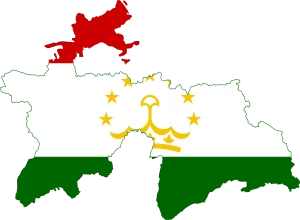Geographical position and Climate of Tajikistan
Tajikistan is a landlocked country located in Central Asia. It’s bordered by Afghanistan to the south, Uzbekistan to the west, Kyrgyzstan to the north, and China to the east. The country is mostly mountainous, with the Pamir and Alay mountain ranges dominating the landscape. Tajikistan includes some of the highest peaks in the world, such as Ismoil Somoni Peak, which reaches an elevation of 7,495 meters (24,590 feet).
The climate in Tajikistan varies widely due to its mountainous terrain:
- Lowlands
- The Fergana Valley and other lowland areas have a continental climate, with hot summers and cold winters. Summer temperatures can exceed 40°C (104°F), while winter temperatures can drop below -20°C (-4°F).
- Highlands
- In the highland regions, the climate is more severe. Summers are cool and short, while winters are long and extremely cold, with heavy snowfall.
- Semi-Arid Regions
- Some parts of the southwest have a semi-arid climate, with mild, wet winters and hot, dry summers.
Rainfall varies across the country, with the majority falling in the spring and autumn months. The variability in climate makes Tajikistan a place with distinct seasonal changes, affecting everything from agriculture to tourism.
Brief history of Tajikistan
Tajikistan’s history is rich and complex, influenced by various empires and cultures. The region was part of ancient Persia and later became a hub along the Silk Road. It saw the spread of Islam in the 7th century and was later conquered by Genghis Khan in the 13th century.
In the 19th century, the Great Game between the British Empire and Tsarist Russia led to Russian influence in the area. Tajikistan became part of the Russian Empire and subsequently the Soviet Union. During this period, it experienced significant social and economic changes.
After a long struggle, Tajikistan declared independence from the Soviet Union in 1991. The young nation faced immediate challenges, including a civil war that lasted until 1997. Since then, it has been working towards political stability and economic development while preserving its rich cultural heritage.

